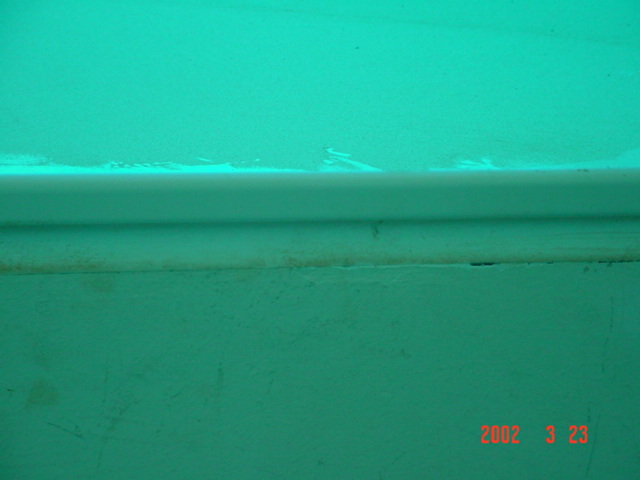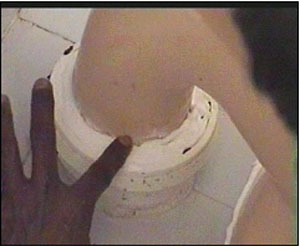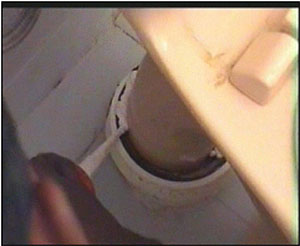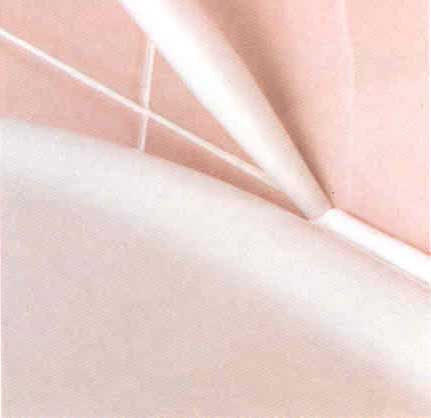Sealant
Property
Terminology
The term “sealant” refers to wet seal in construction industry, includes weather sealant and load bearing/structural sealant. This two terms if frequently used in façade construction.



Classification [6]
Caulking
Installed as filler between dissimilar materials in an interior controlled environment no subject to thermal or structural movement.
Sealant
Exterior application, using high performance material (e.g. silicones), which are typically coloured.
Glazing material
Used in construction of window panels or curtain walls, where higher strength is more important than movement capability.


Grade (according to ASTM C 920)
Grade P (pourable or self levelling)
Sealant shall have flow characteristics such that when tested in accordance with test method C 639 it shall exhibit a smooth, level surface.
Grade NS (non-sag) or gunnable
Sealant shall have flow characteristics such that when tested in accordance with test method C 639 it does not sag more than 4.8mm in vertical displacement. Also the sealant shall show no deformation in horizontal displacement.
Constituents
- Polymer
- Filler: part of sealant that give the ‘body’
- Cross linker: to link the polymer
- Adhesion promoter
- Plasticizer (solution/ oil part of sealant)
- Pigment
| Property | Polysulphide | Polyurethane | Silicone |
| Maximum joint movement capability % | ±25 | ±25 | ±50 |
| Weathering resistance | Good | Excellent, good | Excellent |
| Recovery % | 80 | 90 | 100 |
| Adhesion | Good | Good | Excellent |
| Joint design (number of times expected movement) | 6 | 4 | 4 |
| Shrinkage % | 10 | 5 | 3 |
| Tack-free time (hours) | 72 | 72 | 3 |
| Water immersion | Yes | Some | No |
| Paintable | No | No | No |
| Primer required | Metal, masonry | Horizontal masonry | Metal, natural stone |
| Ultimate elongation % | 1000 | 700 | 1600 |
| Hrz. joints | Yes | Yes | No |
| Modulus of elasticity MPa | 0.21 | 0.245 | 0.21 |
Adhesion Strength (BS 5889:1989)
The ability of sealant to bond to a particular substrate, including adhesion during substrate movement, since materials differ substantially in their adhesive strength to a particular substrate, manufacturer should be consulted for adhesion test samples on proposed substrate.
The “Adhesion in peel” test according to BS 5889:1989, the material shall not fail in adhesion over more than 25% of the test area.
ASTM C 794 tests the adequacy of adhesion of sealant to substrates and other sealant types.
Cohesion Strength (BS 5889:1989)
The ability of a material’s molecular structure to stay together internally during movement. Cohesive strength has a direct bearing on elongation ability. Cohesive failure is when a sealant tears or splits apart due to excessive joint movement or improper installation.
According to BS 5889:1989, adhesion and cohesion shall meet:
- Initial test:
| Type | Condition |
| A | 7 days at 50% extension |
| B | 7 days at 25% extension |
- Cyclic adhesion test
- Adhesion and cohesion after exposure to UV radiation through glass
| Type | Condition |
| A | Withstand 100% extension for 24 hrs UV exposure and water immersion |
| B | Withstand 60% extension for 24 hrs UV exposure and water immersion |
Elasticity
According to BS 5889:1989 the types of sealant according to the elastic recovery:
| Type of sealant | Recovery |
| A | >= 60% from 100% extension |
| B | >= 90% from 60% extension |
Shore Hardness (ASTM D 2240)
Shore hardness is resistance to impact by a durometer gauge. This property becomes important in selecting sealant subject to traffic or punctures, such as horizontal paver joints.
| Type of Sealant | Hardness* |
| Epoxide polysulohide and flexibilized epoxide (two-part)** | 70-95 |
| Polysulphide (one part) | 15-40 |
| Polysulphide (two-part)
High Modulus Low Modulus |
40-60 15-20 |
| Polyurethane (one part) | 15-40 |
| Silicone
High Modulus Low Modulus |
20-30 10-20 |
| * Shore A Hardness
** Too rigid to be used in curtain wall or cladding system |
|
According to ASTM C 920, the classification of hardness is as follows:
- Use T (traffic); shall have a hardness reading after being properly cured, of not less than 25 or more than 50 when tested in accordance with test method C 661.
- Use NT (non traffic); shall have a hardness reading, after being properly cured, of not less than 15 or more than 50 when tested in accordance with test method C 661.
Service Temperature Limit
| Type of Sealant | Service Temperature Limits ºC |
| Epoxide polysulohide and flexibilized epoxide (two-part)** | -20 to +80 |
| Polysulphide (one part) | -20 to +80 |
| Polysulphide (two-part)
High Modulus Low Modulus |
-20 to +80 -20 to +80 |
| Polyurethane (one part) | -40 to +70 |
| Silicone
High Modulus Low Modulus |
-60 to +180 -50 to +120 |
According to ASTM C 920 on effect of heat aging; the sealant shall not lose more than 7% of its original weight or show any cracking or chalking when tested in accordance with test method C 1246.
Movement Capability
Sealant must have a cyclic movement capability of ±12% to ±25% through its useful service life. Refer to test methods specified in ASTM C719 or equivalent national standard.
Modulus (ASTM D412)
High, medium, and low modulus.
Modulus at 100% elongation: ± 0.4 MPa.
Tensile Strength (ASTM D412)
Tensile strength: 1.4-2 MPa
Staining
Possibility of sealant causing staining to certain substrates is tested in accordance with ASTM C1248 or D2203-01
Compatibility with other material (for façade)
Compatibility of sealant with other materials such as gasket, spacer, setting block, etc is tested in accordance with ASTM C1087.
Adequacy of adhesion of sealant to substrates and other sealant types is tested in accordance with ASTM C794.